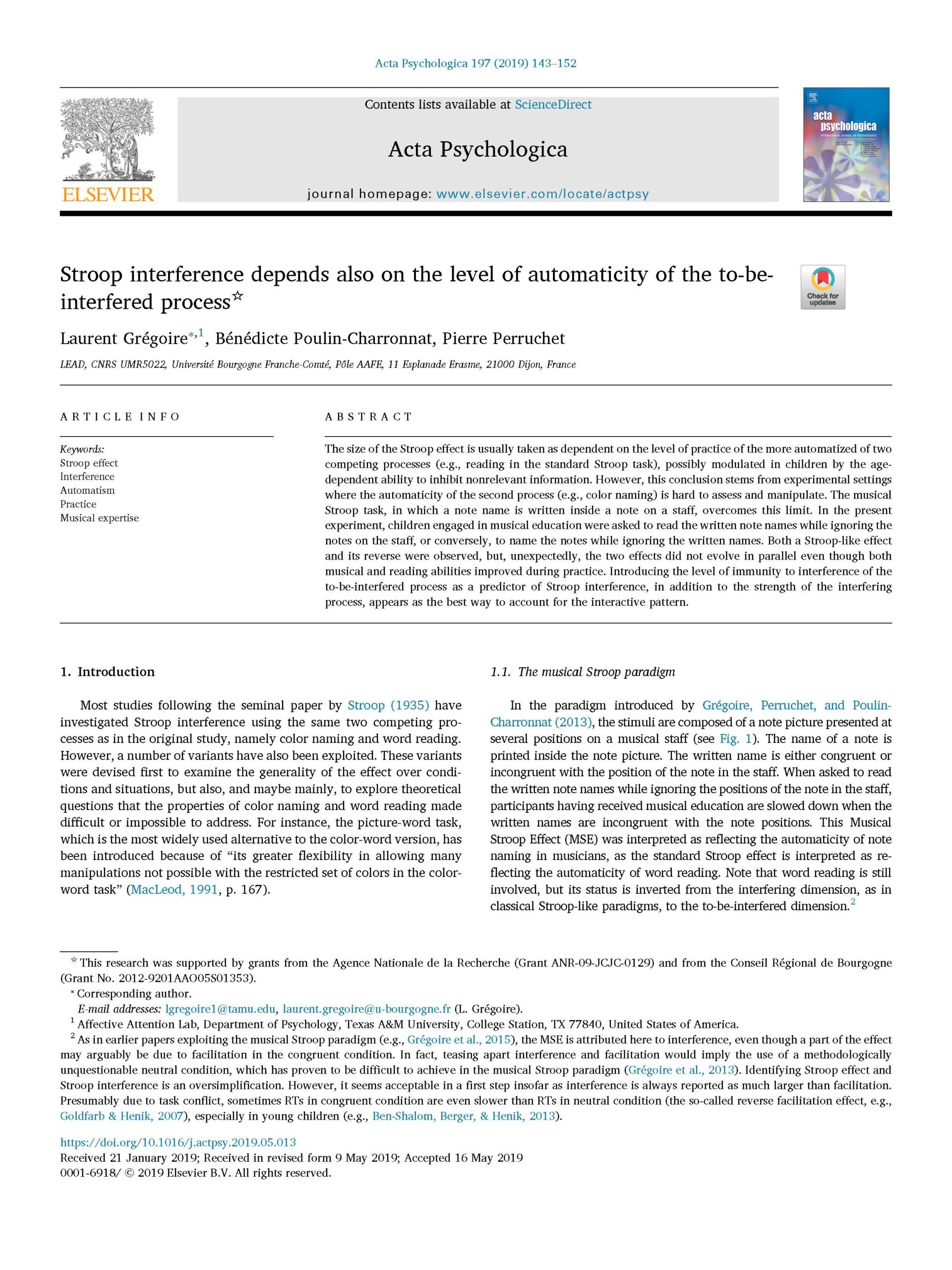The size of the Stroop effect is usually taken as dependent on the level of practice of the more automatized of two competing processes (e.g., reading in the standard Stroop task), possibly modulated in children by the agedependent ability to inhibit nonrelevant information. However, this conclusion stems from experimental settings where the automaticity of the second process (e.g., color naming) is hard to assess and manipulate. The musical Stroop task, in which a note name is written inside a note on a staff, overcomes this limit. In the present experiment, children engaged in musical education were asked to read the written note names while ignoring the notes on the staff, or conversely, to name the notes while ignoring the written names. Both a Stroop-like effect and its reverse were observed, but, unexpectedly, the two effects did not evolve in parallel even though both
musical and reading abilities improved during practice. Introducing the level of immunity to interference of the to-be-interfered process as a predictor of Stroop interference, in addition to the strength of the interfering process, appears as the best way to account for the interactive pattern.
Stroop interference depends also on the level of automaticity of the to-be-interfered process
